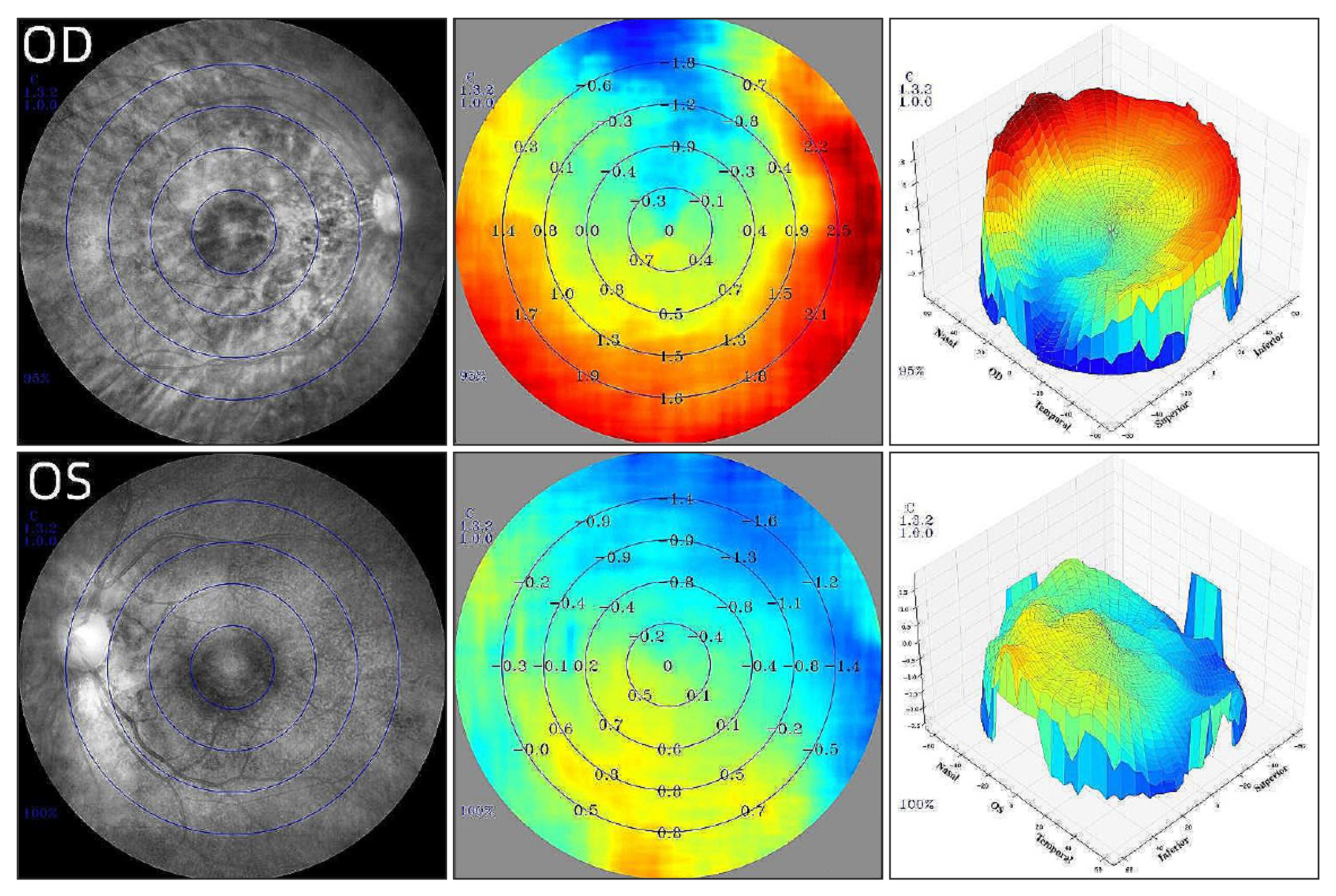 |
|
Using multispectral refraction topography, researchers found that eyes with greater myopia exhibited more hyperopic peripheral defocus in the context of anisometropia. Additionally, there were significant differences in defocus values at the inferior and temporal positions between the myopia eyes group and the fellow eyes group. This emerging technology might one day be able to refine the assessment of pediatric myopia and help clinicians tailor a treatment approach to each individual. Photo: Tong, G, et al. BMC Ophthalmology. June 17, 2024. Click image to enlarge. |
Researchers have been exploring methods that slow or prevent myopia, most centered on the concept of how peripheral hyperopic defocus impacts axial length growth and progression. Testing theories on a population with anisometropia offers a distinctive experimental framework without the conflict of confounding variables. This was the foundation for a new study published recently that aimed to explore relative peripheral refractive characteristics in children with non-amblyopic myopic anisometropia and potential associations between relative peripheral refractive errors and myopia.
A total of 64 healthy teenagers of Chinese ethnicity were included in the retrospective study. Researchers used a new imaging concept called multispectral refractive topography (MRT), to collect a comprehensive assessment of ocular refractive status encompassing myopia and anisometropia. MRT measures the refractive state of the retina at multiple individual points and assigns a numeric value to each. Its purpose here is to quantify retinal hyperopic defocus at multiple points and use those values to create a heatmap of the distribution (see image).
“Our study revealed that eyes with high myopia exhibit greater relative hyperopic peripheral defocus, low myopia exhibit less relative hyperopic peripheral defocus, while eyes with emmetropia and hyperopia tend to display relative myopic peripheral defocus,” wrote the authors. “These findings are consistent with previous research on the topic. To our knowledge, this is the first study to compare interocular differences using MRT in teenagers with anisometropia.”
This study also aligns with previous findings indicating that peripheral refraction within the 30- to 45-degree range from the fovea may be more closely linked to myopia development. “Our interpretation speculates that peripheral refraction within the temporal and inferior regions may exert a pivotal influence on axial elongation,” they wrote. “This assumption is based on the broader visual fields in these regions and the tendency of students with anisometropia to adopt tilted head positions while writing. Such postural adjustments could conceivably affect the imaging of the temporal and inferior sectors of the retina. However, further experiments are needed to validate these hypotheses.”
The researchers observed a positive correlation between eye axial length and total refractive defocus values and evidence that longer eye axial length is associated with increased peripheral hyperopia defocus within 30-45 of the fovea. “This suggests that peripheral hyperopia defocus in this area may contribute to myopia development,” they surmised.
Limitations noted in this study include its small sample size and the inability to track participants’ progression over time. Also, the use of MRT has not been widely used, and its accuracy and repeatability would need further verification in subsequent studies, according to the authors.
The study concluded that eyes with more myopia exhibit more hyperopic peripheral defocus in patients with anisometropia. The authors also say MRT could enhance diagnosis and prediction of myopia once it finds broader applications in clinical practice.
Tong, G, Jin Y, Wu H, Zhou Y. Characteristics of peripheral refractive errors in eyes or patients with non-amblyopic myopic anisometropia. BMC Ophthalmology. June 17, 2024. [Epub ahead of print.] |


